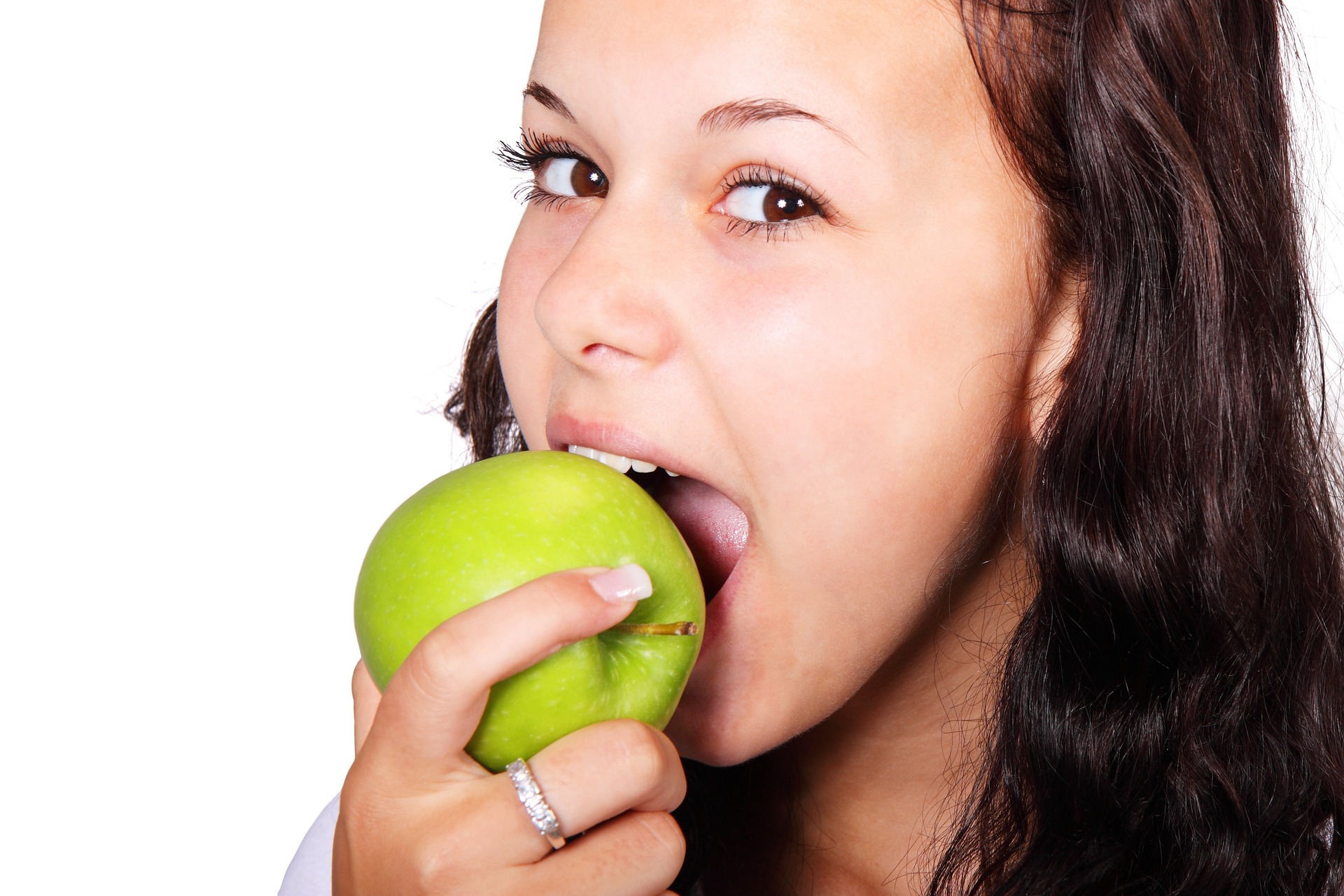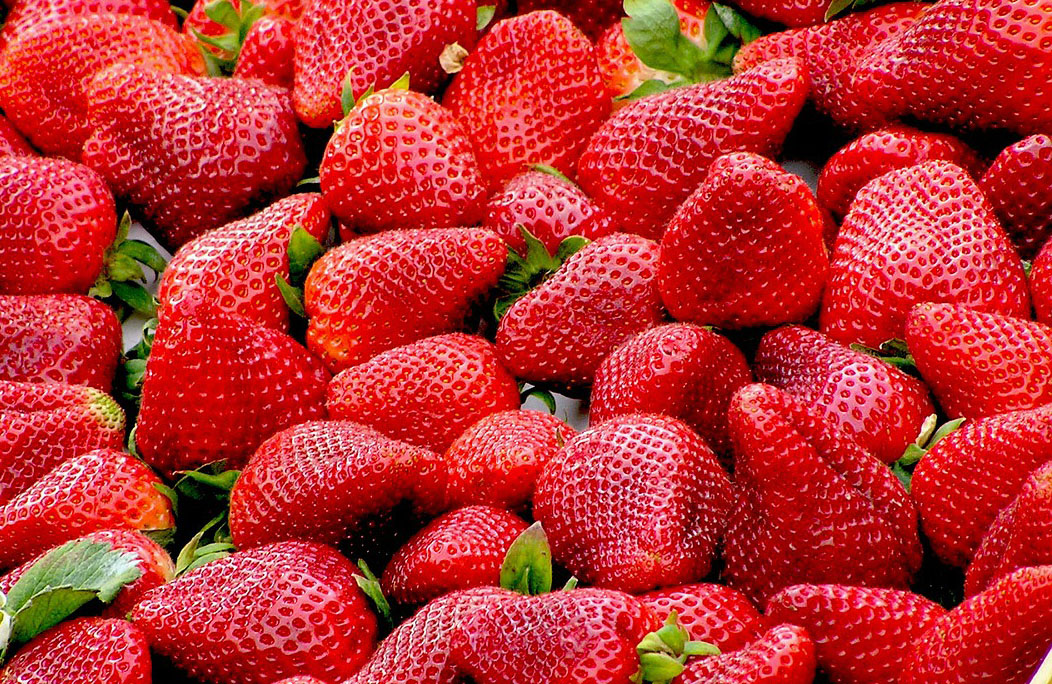UPDATE! SEE THE NEW 2017 LIST ! 🙂 I think it’s interesting to compare my 2016 List to the new 2017 List. It’s actually quite close. https://draxe.com/dirty-dozen/
GOING ORGANIC?
More and more of us are wanting to go organic today. But it isn’t always convenient, or affordable.
WHAT to do?

Produce Knowledge: The first thing to gear up on is knowing your options in the veggie/fruit world.
Not all of these yummies are so terrible if they aren’t organic. But there are others that are far worse by degree, if not. The EWG (Environmental Working Group) report for 2016 lists two groups. The Dirty Dozen – the top 12 with highest levels of harmful pesticides, and The Clean Fifteen – showing by number the least offenders. *see Lists below.

For the last five years, the lovely, crunchy apple was #1 on The Dirty Dozen. It’s fallen to #2.
A NEW innocent little fruit has now become the non-organic pesticide-laden ‘bad guy’. 🙁

In 2016, the delectable, juicy STRAWBERRY hits # 1 on the “Dirty” list!
EWG analyzed test results of more than 35,200 samples of fruits and vegetables taken by the FDA (U.S. Department of Agriculture and the Food and Drug Administration).
At least 98 % of all the non-organic strawberries they sampled, at least 98 % had detectable pesticide residues! 47 % of the samples had residues of 10 or more pesticides, but some showed residue from 17 different pesticides. More than I want my family ingesting!
EWG reports that some chemicals found were mostly benign, while OTHERS have been linked to cancer, reproductive and developmental damage, hormone disruption, and neurological problems. “It is startling to see how heavily strawberries are contaminated with residues of hazardous pesticides, but even more shocking is that these residues don’t violate the weak U.S. laws and regulations on pesticides in food.”
The EWG claims the EPA’s levels of residues allowed on produce are too lax to protect Americans’ health. “They should be updated to reflect new research that shows even very small doses of toxic chemicals can be harmful, particularly for young children,” Sonya Lunder, EWG Senior Analyst, said.
The EPA has said the levels are not harmful to eat. “We perform dietary risk assessments to ensure that all tolerances established for each pesticide are safe. These assessments account for the fact that the diets of infants and children may be quite different from those of adults and that they consume more food for their size than adults,” the agency says on its website.
Though some of the chemicals found on the strawberries relatively benign, others have been linked to cancer, reproductive and developmental damage, hormone disruption, and neurological problems, the group reveals.
“It is startling to see how heavily strawberries are contaminated with residues of hazardous pesticides, but even more shocking is that these residues don’t violate the weak U.S. laws and regulations on pesticides in food,” Sonya Lunder, EWG Senior Analyst, said in a statement. “The EPA’s levels of residues allowed on produce are too lax to protect Americans’ health. They should be updated to reflect new research that shows even very small doses of toxic chemicals can be harmful, particularly for young children.”
The EPA has claimed the levels are not harmful to eat. “We perform dietary risk assessments to ensure that all tolerances established for each pesticide are safe. These assessments account for the fact that the diets of infants and children may be quite different from those of adults and that they consume more food for their size than adults,” the agency says on its website.
WHAT IS LURKING on those non-organic produce?
The EPA lists what pesticides/chemicals are used on what crops HERE (scroll down).
BETTER SAFE THAN SORRY. I, for one, would rather be on the safe side and Go Organic where the “Dirty Dozen” is concerned.
*Here are the two EWG lists for your shopping convenience:
2016 “DIRTY DOZEN“
- Strawberries
- Apples
- Nectarines
- Peaches
- Celery
- Grapes
- Cherries
- Spinach
- Tomatoes
- Sweet Bell Peppers
- Cherry tomatoes
- Cucumbers
#1 on the ‘Good Guy’ List
So which yummy made the top of the Clean fifteen list?

AVOCADO! And I say YAY! I love to include this nutrition-packed guy in my diet every day. And with less than one percent of samples showing any detectable pesticides, that’s all right with me!
No single fruit sample from this “clean” list tested positive for more than four types of pesticides and very few tested for more than one. So not PERFECT, but something many of us can live with when we need or desire to.
2016 “CLEAN FIFTEEN”
- Avocado
- Sweet Corn
- Pineapple
- Cabbage
- Sweet Peas (frozen)
- Onions
- Asparagus
- Mango
- Papaya
- Kiwi
- Eggplant
- Honeydew Melon
- Grapefruit
- Cantaloupe
- Cauliflower
With this delicious list, at least we can breath quite a bit easier and go non-organic where these are concerned. But what about the ones that fall through the EGW fruit & veggie cracks? I’m thinking it’s a matter of individual discernment. If not on the ‘Bad Guy Foodie’ (my words) list, I feel at least safe enough to eat on occasion. The list changes yearly, so be aware. At any rate, I’ll always prefer organic where able.
WHAT ELSE can we do?

PLANT, GROW, HARVEST: Best way to know what is on our PRODUCE! We can always get involved in community or Neighborhood Gardening. (Stay Tuned for more on this!)
If you are growing your own ORGANIC, here’s some great NON TOXIC HOME PESTICIDE.
Eco Defense Organic Home Pest Control Spray
Eco Defense Pest Control Pouches – All Natural – Repels Rodents, Spiders, Roaches, Ants, Moths & Other Pests – 12 Pack – Best Mouse Trap Alternative
LOCAL FARMERS: Know which farms grow organic and where you can find the harvest you desire!
BE PRODUCE SHOP SAVVY: Look for the places to shop near you that carry organic. Always great to SHOP LOCAL! (Stay Tuned for more on this!)
* * *
2017 DIRTY DOZEN & CLEAN FIFTEEN!
The 2017 EGW’s Dirty Dozen List & Clean 15 List
2017 DIRTY DOZEN
- Strawberries
- Spinach
- Nectarines
- Apples
- Peaches
- Pears
- Cherries
- Grapes
- Celery
- Tomatoes
- Sweet Bell Peppers
- Potatoes
2017 CLEAN FIFTEEN
The Clean 15 list includes produce that is least likely to be contaminated by pesticides. Here’s the 2015 Clean 15 List:
- Sweet corn
- Avocados
- Pineapples
- Cabbage
- Onions
- Frozen Sweet Peas
- Papayas
- Asparagus
- Mangos
- Eggplant
- Honeydew
- Kiwi
- Cantaloupe
- Cauliflower
- Grapefruit
Some sweet corn and papayas sold in the United States are not GMO Free, so best to choose organic to avoid.
* * *
Happy munching and crunching, Everybuddies! Please SUBSCRIBE to keep in touch! ♥ ~ Deborah
Let me know your faves and what you do to be Pesticide Free in the comment box below! 😀

Good to know, because I love avocados! I try to eat organic, but it’s also nice to be able to know a list of safe fruits and veggies.
Cool, Tom! So glad if you might find it helpful. Let me know how it goes! 🙂
Thanks for sharing the information! Have an awesome day Deb!
My absolute pleasure, Jimmy! I shall and hope you do as well. 🙂
Thanks for sharing such a nice piece
of fastidious writing
superb blog! Appreciate it!
Marvelous! helpful data, keep it up.
Hi, I am really eager for this post to be updated
on a regular basis. nice stuff!